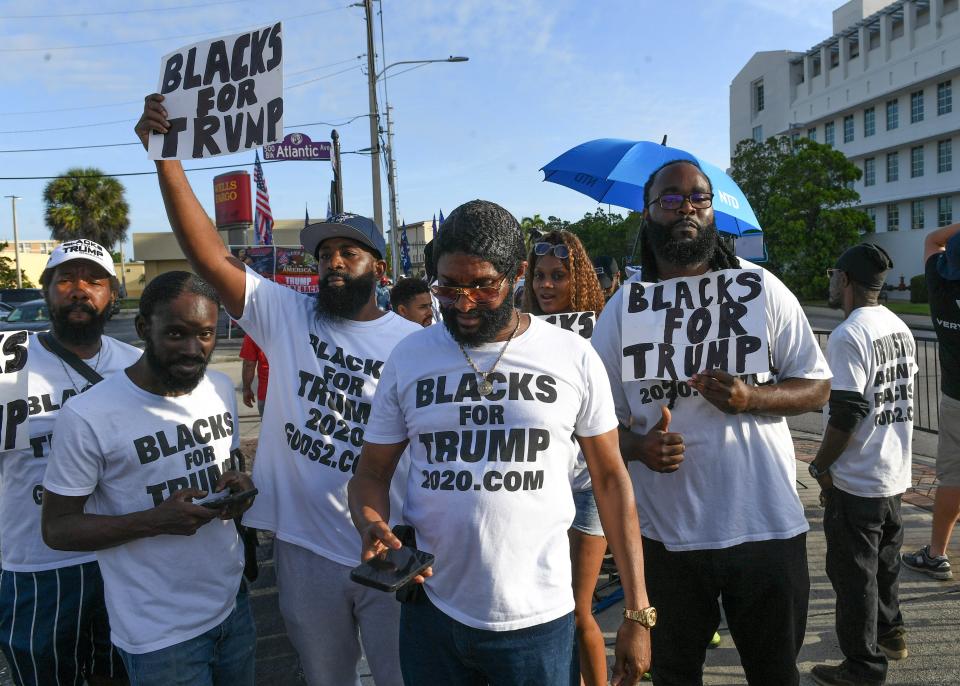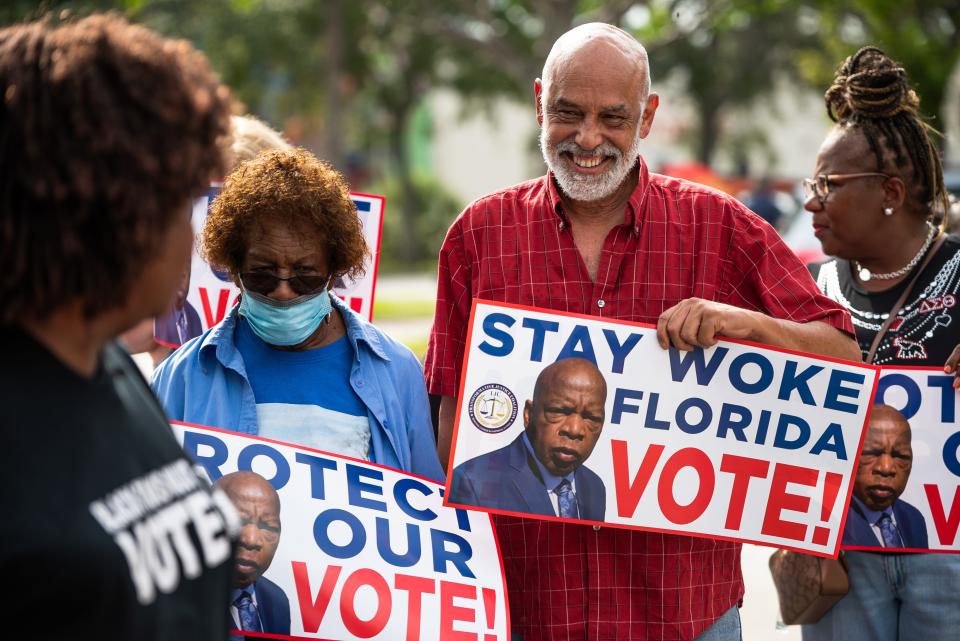Race is a dynamic piece of the realignment puzzle | Opinion
- Oops!Something went wrong.Please try again later.
- Oops!Something went wrong.Please try again later.
People across all groups are confronting a changing political whirlwind. Both presidential candidates are saddled with significant negatives. While the vast majority of voters are dug in, some are in play. That’s where a good part of the campaign is focused.
It’s been clear for a while that the parties have headed in different directions, with a whole new combination of issues ranging from climate change and crime to immigration, inflation, threats to democracy, guns and abortion.
Meanwhile, the old voting patterns have faded. The Democrats no longer command working-class loyalties. White working-class voters have steadily drifted to the Republican Party while their more educated, white-collar counterparts have gone in the other direction. It’s a different game.
Imagine a puzzle, with some pieces glued in place and the rest in play. Now imagine six or seven states where the size of any piece can shift the national outcome to red or blue. The pieces moved in key states between 2008 and 2016. Enough white working-class voters shifted from Barack Obama to Donald Trump to swing the election. Many returned in 2020.
Black and Hispanic voters could decide the presidential election
The remaining shift involves African Americans and Hispanics. Both have consistently and overwhelmingly voted Democratic for decades. In fact, African Americans have been the most loyal and consistent pillars holding up the party tent. A drop in support among Black and/or Hispanic voters in key states could well shift the outcome from Biden to Trump.

This is something that is causing great concern among Democrats, because a shift of a few hundred thousand votes in heavily African American areas in Detroit, Atlanta, Philadelphia and Milwaukee could shift the outcomes of Michigan, Georgia, Pennsylvania and Wisconsin from Biden to Trump. That’s 60 of Biden’s 306 electoral votes in 2020, leaving him well short of the 270 needed to win.
For decades the Republican candidate for president could count on no more than 10% of the Black vote. This year it's approaching double that amount, with most of the increase attributable to males. It’s a long way to Election Day. Maybe we’ll see a return to the norm. But if present trends hold up through the barrage of messaging and campaigning, these states could again provide Trump’s margin of victory.
Then there’s the even greater shift in the Hispanic vote. Biden received two thirds in 2020. Right now it’s fairly evenly divided. This could take two states and 17 more electoral votes from Arizona and Nevada from Biden to Trump.
What is causing the shift in Black and Hispanic voters?
Researchers are trying to figure out what is driving this drop-off among key elements of the Democratic base, whether it will hold through the campaign and whether it has staying power.

Among Hispanics the main driver seems to be cultural. It’s captured by reaction against someone’s idea that the term “Latinx” was appropriate. The issues that appeal to the higher-educated suburban voters ‒ such as abortion and LGBTQ+ rights ‒ are off-putting to the much more conservative majority of Hispanics, who embrace much more traditional values, including patriotism and a strong work ethic.
The reasons for marginal decline of support for Biden among African Americans are not clear. One could point to the crime problem in cities and the impact of persistent inflation. The legacy of the 1960s and President Lyndon Johnson’s stewardship of the Civil Rights and Voting Rights Acts may have faded.
Policy questions remain on immigration and foreign policy. Then there’s turnout. Concern over the demise of Roe v. Wade brought enough voters to the polls in 2022 to stop the widely anticipated "red wave."
Does all this mean Trump will win? Maybe, if trends continue. But there’s a campaign ahead, and Biden’s is much better funded. Plus, Trump has major legal exposure.
Messaging matters. When it is all said and done, the Biden campaign would love to count on nine out of 10 Black and seven out of 10 Hispanic voters. They’re way short of that now.
William Lyons is Professor Emeritus of Political Science and Interim Associate Director of The Institute of American Civics at the Howard Baker School of Public Policy and Public Affairs at the University of Tennessee. He also served as Chief Policy Officer for Knoxville Mayors Bill Haslam, Daniel Brown and Madeline Rogero. The opinions expressed are those of the author and do not necessarily reflect the official policy or position of the Institute of American Civics or the University of Tennessee.
This article originally appeared on Knoxville News Sentinel: Race is a dynamic piece of the realignment puzzle | Opinion

